by Thomas Pesa
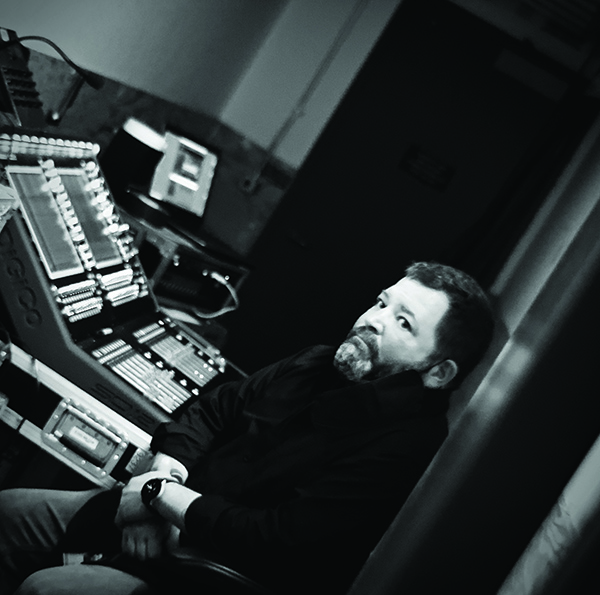
From an input to an ear. That is the basic idea in regard to monitor mixing on live events. In particular, the live events I mix monitors on include live multi-act TV award shows and special events like the Super Bowl halftime show. This is a unique world to work in since it is not the same band each night like the touring world, although I am fully aware of the challenges of both types of stage. I get along great with most touring Monitor Mixers who come through our award shows. We have worked together for years toward a common goal and it is something for which I am consistently grateful. I can break it down to several main focuses that allow the greatest chance for success.
Have a Plan
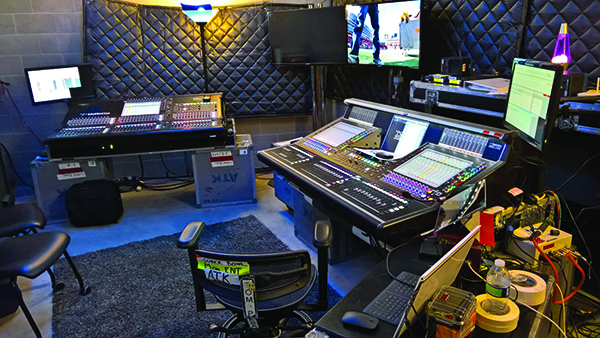
Out of all the advice I can give for up-and-coming Live Sound Mixers is to have a plan. In the TV world, your template on your mixing console is what allows you to reach for anything you need, be it certain processing, or particular inputs not normal to most shows and many options for routing outputs. In our current time, one of the more popular platforms is DiGiCo. I myself mix most every show on a DiGiCo SD5 or SD7 and most recently, the Quantum 7. These consoles offer an extreme amount of inputs and outputs and a slew of processing and FX to go along with it. Because of this, I am able to build a template that will allow me to access every input on the show. Even if it is a certain video bus from the broadcast truck or a remote package, you never know what an artist may perform along with. As for outputs, I try to have at least twelve channels of RF in ear monitors, four channels of hardwired ears for upstage drums, keys, etc., twelve available wedge mixes, along with stereo side fills. That allows me to get what anyone needs quickly. Being the guy holding up rehearsals while searching for something you did not plan for is not a comfortable scenario. Trust me.
In that same plan should be the homework to get as much information you can get ahead of time. It is usually all right there with production paperwork, phone numbers, emails, etc. The shows I work on usually offer as much info as possible so you know where the performance is, such as main stage satellite stage, etc. It also tells you who is involved with the performance, what instrument they might play, if they have a vocal mic or what their preferences are, such as in-ear monitors or wedge monitors. In the world of Super Bowl halftime shows, that plan also includes a stage that is comprised of twenty or so individual 3,000-lb carts that come together to form a single stage. All of the cable routing has to work in accordance to how the stage breaks apart. Wedge monitor locations have to be meticulously mapped out to both be effective but not in the way of staging. I have done twenty-six halftime shows, both on the field and behind the console and it never gets old. Along with structural planning, a good conversation with the touring Monitor Mixer can get you way ahead on what expectations are. This info has especially allowed me to build a “predialed” snapshot for that artist or band before they arrive for rehearsal. After all, their mixer knows what they like, but I know the layout of the show. So, guiding them through that process is key and I try to have as much done in advance to where nobody is waiting on us. The TV show soundcheck has been whittled down to the Stage Manager sometimes saying to let them do a pass while they already start looking at camera shots. This is not ideal but they play and my tech onstage rattles off requests from each player on intercom and you quickly make the adjustments. By the end of the second pass, the band settles in and they do a few more camera passes and they leave happy. That is my goal.
Situational Awareness
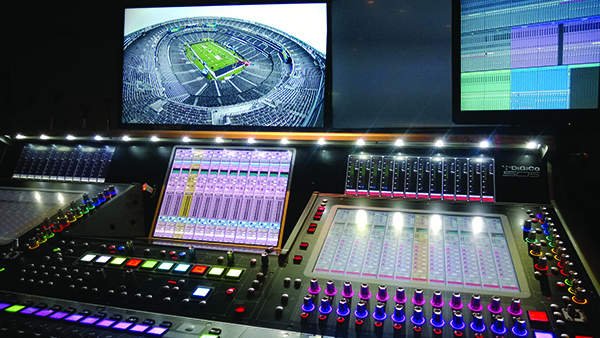
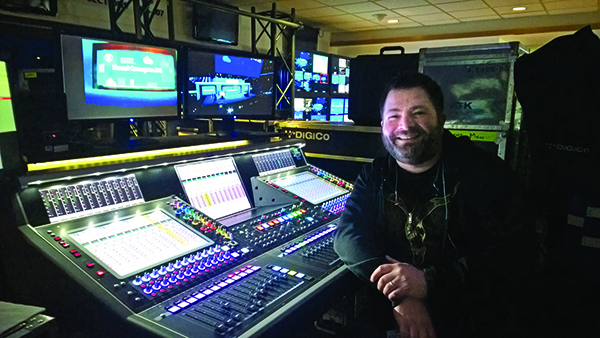
The idea of being aware of what is going on around you is, to me, a very important aspect of life. Not being caught off guard and ready to deal with anything coming your way and even predicting what may come your way is a basic in my life. The same goes for the show or event environment. Having some knowledge based on a little due diligence can let you know important details such as limitations of performance areas. If an artist performs on a remote stage or some crazy spot that production cooked up, you need to know what will work for monitors. Will the RF in ears have the range to reach there, or are you able to put wedge monitors there, or is it impossible to cable to them? You have to be aware of these details. Many times, there are two monitor mixers if it is a multi-stage show so, there will be a SR Mixer and a SL Mixer. Oftentimes, we have to work together on performances that may involve multiple bands who perform together back-and-forth. A big show opener would be a great example of that. Being aware ahead of time allows you to be able to deal with anything that comes your way.
This idea is not only about your situation, either. It is smart to have a grasp on the situation of the entire audio crew. It is not just you doing your job and just passing it along. The audio crew on these shows is a well-oiled machine that rely on each other. It pays for me to know what the A2’s onstage patching the band inputs or handing out RF mics have going on. What I do, or do not do, greatly impacts them.
The idea of being aware is an important one. I know it sounds simple, but there are a ton of moving parts and details on our shows, and being aware of as many that directly affect you is key.
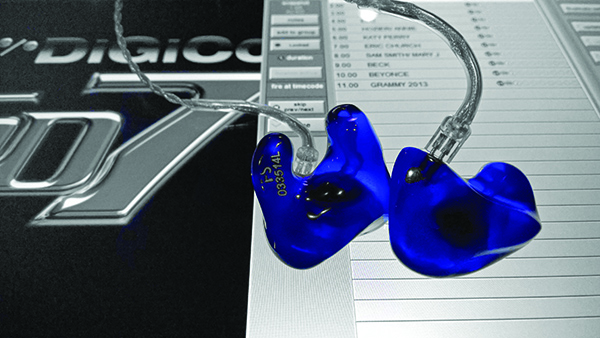
Less Is More
I know that it is one of the most over-used phrases, but in my approach to monitor mixing, less is more. If I route a vocal through a parametric EQ, some light compression, all of which are right there on the console channel strip and to an in-ear mix that is a pretty streamlined process. I can be assured that I am not digging through layers of extra processing elsewhere on the console while the truck moves onto the next input, leaving me behind. I am not saying that sometimes you may not need something extra if a vocalist or player is problematic or used to hearing something very specific. But I wouldn’t go out of my way to route every instrument or vocal through four different Wave processors just because I can. That is an easy way to get behind on the fast-paced soundcheck environment of TV shows.
There are times when a band or artist coming into a show absolutely must bring their own monitor rig. I have seen this be successful and smooth and I have also seen it crash and burn. That same awareness I spoke of is based on thirty-plus years of this type of show environment. I would not dare tell a touring mixer what works on his stage night after night, so I find it best when they listen to some warnings about the pros and cons. I have seen far too many techs pulling apart fanouts of XLR inputs trying to figure out why the inputs are not one to one … and the selling point is usually, “It will make it easier.” Not always the case.
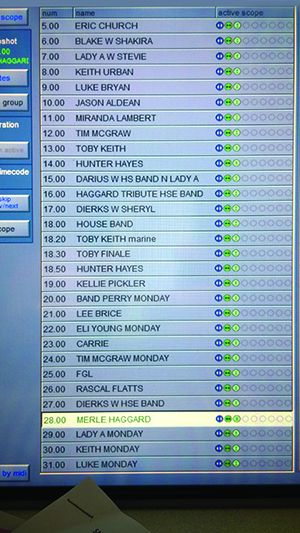
Now, by no means do I skimp on what I am mixing by utilizing the “less is more” approach. I still dive into those dynamics, EQ and gain and strive to make everything sound as good and cohesive as possible. Monitor mixing is unique in a way that you can go to the ends of the earth creating what you think sounds incredible, and it might, but it is all subjective. The listening audience, who at the end of the day is the final critic, has to be happy. This is where “psycho acoustics” comes into play. It has often been said that artists talk in colors, something sounds blue, OK, let me figure that out and add some red! Again, a trusted monitor guy that knows that artist can explain the often strange request, once again reinforcing the idea that we’re all working together.
At the end of the day, I find it very rewarding to pull off a successful show. Working to get a stage full or performers all in the same groove is not only about clinical execution of routing on the console. It is also about the fact that you are making artists happy. You are part of the success that may just lead to a memorable performance that goes down in history. A career of some of those moments is very rewarding.
Tom Pesa has won seven Primetime Emmys and another nine Emmy nominations for live shows such as the Oscars, Grammys, and Super Bowl halftime shows.